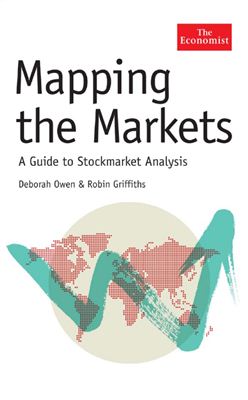Bloomberg Press, 2006. - 134 pages.
In this guide to stock market analysis, the authors offer a global overview of business cycles and their impact on financial markets, explain how stock markets are affected by the cycles and by seasonal and secular trends, and show readers how to identify sectors and stock in which to invest.
The global financial markets tu over billions of dollars daily. An array of different instruments is available to trade in these markets, ranging from the relatively simple purchase of a stock to trading such exotic creatures as butterfly spreads. Participation at any level involves taking a view as to which way the market in question will move. There are essentially only two methods for analysing the future direction of any market, whether it be equities, currencies, interest rates or commodities: one involves fundamental analysis, the other technical analysis.
Fundamental analysts weigh up all the relevant economic variables and then make a judgment as to whether the current price of a share or market represents what they have calculated to be fair value or whether it is overvalued or undervalued compared with what they perceive to be the correct level. Technical analysts believe that, at any particular time, the price reflects everything that is known about a market or stock. Furthermore, since markets essentially reflect human behaviour and since human behaviour is broadly consistent over time, there is a tendency for
price behaviour to follow similar pattes. Prices, therefore, move within trends which appear more often and persist for longer than the laws of chance would allow.
In this guide to stock market analysis, the authors offer a global overview of business cycles and their impact on financial markets, explain how stock markets are affected by the cycles and by seasonal and secular trends, and show readers how to identify sectors and stock in which to invest.
The global financial markets tu over billions of dollars daily. An array of different instruments is available to trade in these markets, ranging from the relatively simple purchase of a stock to trading such exotic creatures as butterfly spreads. Participation at any level involves taking a view as to which way the market in question will move. There are essentially only two methods for analysing the future direction of any market, whether it be equities, currencies, interest rates or commodities: one involves fundamental analysis, the other technical analysis.
Fundamental analysts weigh up all the relevant economic variables and then make a judgment as to whether the current price of a share or market represents what they have calculated to be fair value or whether it is overvalued or undervalued compared with what they perceive to be the correct level. Technical analysts believe that, at any particular time, the price reflects everything that is known about a market or stock. Furthermore, since markets essentially reflect human behaviour and since human behaviour is broadly consistent over time, there is a tendency for
price behaviour to follow similar pattes. Prices, therefore, move within trends which appear more often and persist for longer than the laws of chance would allow.

